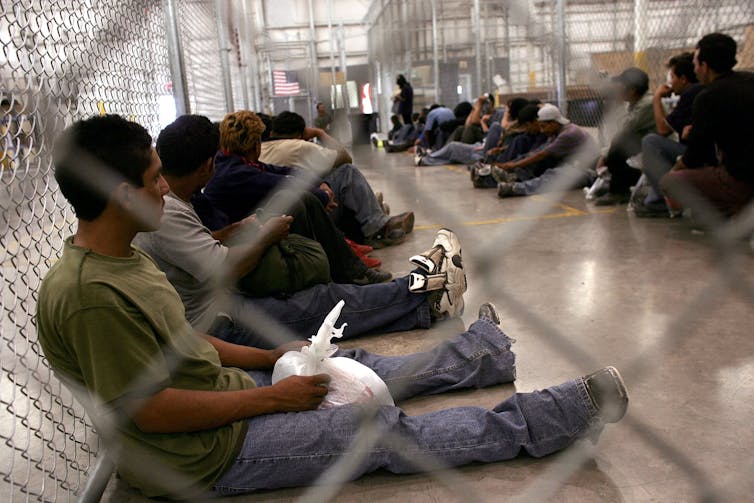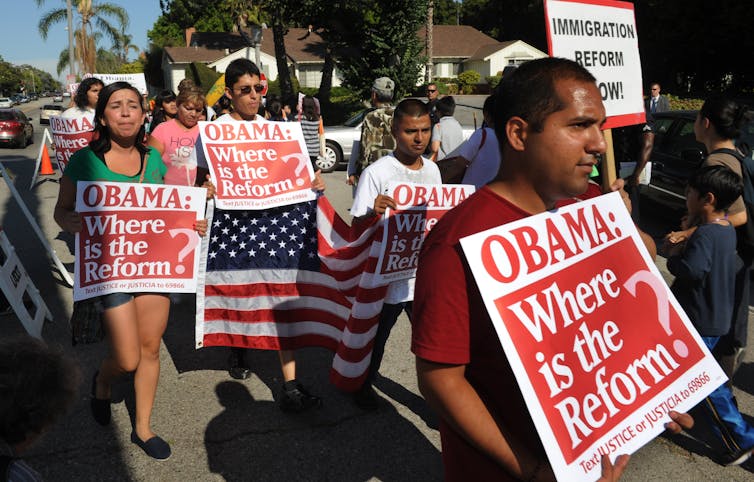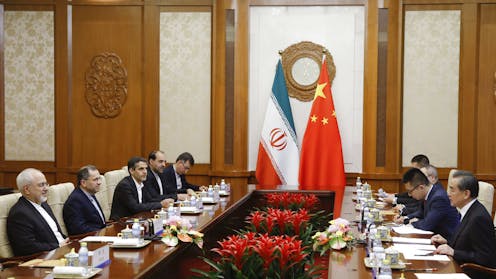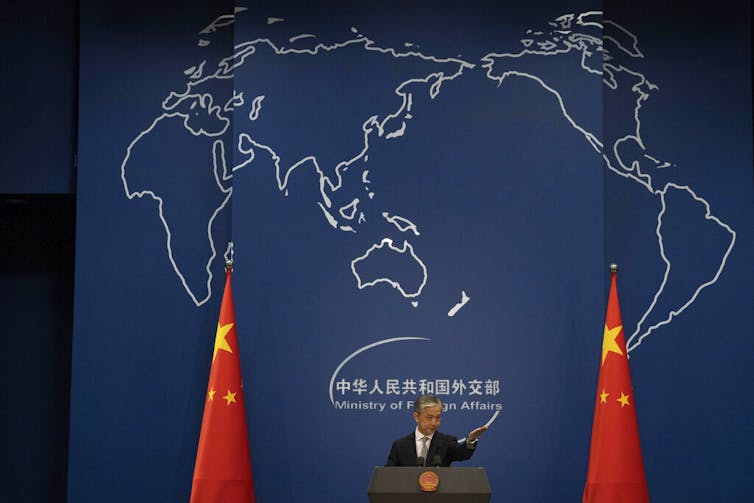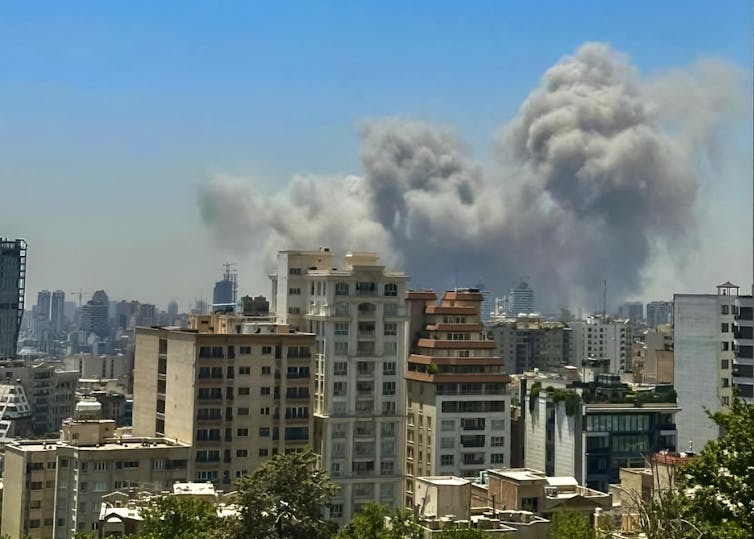Source: The Conversation – USA (3) – By Brian N. Chin, Assistant Professor of Psychology, Trinity College

I saw it firsthand after my cat Murphy died earlier this year. She’d been diagnosed with cancer just weeks before.
She was a small gray tabby with delicate paws who, even during chemotherapy, climbed her favorite dresser perch – Mount Murphy – with steady determination.
The day after she died, a colleague said with a shrug: “It’s just part of life.”
That phrase stayed with me – not because it was wrong, but because of how quickly it dismissed something real.
Murphy wasn’t just a cat. She was my eldest daughter – by bond, if not by blood. My shadow.
Why pet grief doesn’t count
More than two-thirds of U.S. households include pets. Americans tend to treat them like family with birthday cakes, shared beds and names on holiday cards.
But when someone grieves them like family, the cultural script flips. Grief gets minimized. Support gets awkward. And when no one acknowledges your loss, it starts to feel like you weren’t even supposed to love them that much in the first place.
I’ve seen this kind of grief up close – in my research and in my own life.
I am a psychologist who studies attachment, loss and the human-animal bond.
And I’ve seen firsthand how often grief following pet loss gets brushed aside – treated as less valid, less serious or less worthy of support than human loss. After a pet dies, people often say the wrong thing – usually trying to help, but often doing the opposite.

vesi_127/Moment via Getty Images
When loss is minimized or discounted
Psychologists describe this kind of unacknowledged loss as disenfranchised grief: a form of mourning that isn’t fully recognized by social norms or institutions. It happens after miscarriages, breakups, job loss – and especially after the death of a beloved animal companion.
The pain is real for the person grieving, but what’s missing is the social support to mourn that loss.
Even well-meaning people struggle to respond in ways that feel supportive.
And when grief gets dismissed, it doesn’t just hurt – it makes us question whether we’re even allowed to feel it.
Here are three of the most common responses – and what to do instead:
‘Just a pet’
This is one of the most reflexive responses after a loss like this. It sounds harmless. But under the surface is a cultural belief that grieving an animal is excessive – even unprofessional.
That belief shows up in everything from workplace leave policies to everyday conversations. Even from people trying to be kind.
But pet grief isn’t about the species, it’s about the bond. And for many, that bond is irreplaceable.
Pets often become attachment figures; they’re woven into our routines, our emotional lives and our identities. Recent research shows that the quality of the human-pet bond matters deeply – not just for well-being, but for how we grieve when that connection ends.
What’s lost isn’t “just an animal.” It’s the steady presence who greeted you every morning. The one who sat beside you through deadlines, small triumphs and quiet nights. A companion who made the world feel a little less lonely.
But when the world treats that love like it doesn’t count, the loss can cut even deeper.
It may not come with formal recognition or time off, but it still matters. And love isn’t less real just because it came with fur.
If someone you care about loses a pet, acknowledge the bond. Even a simple “I’m so sorry” can offer real comfort.
‘I know how you feel’
“I know how you feel” sounds empathetic, but it quietly shifts the focus from the griever to the speaker. It rushes in with your story before theirs has even had a chance to land.
That instinct comes from a good place. We want to relate, to reassure, to let someone know they’re not alone. But when it comes to grief, that impulse often backfires. Grief doesn’t need to be matched. It needs to be honored and given time, care and space to unfold, whether the loss is of a person or a pet.
Instead of responding with your own story, try simpler, grounding words:
-
“That sounds really hard.”
-
“I’m so sorry.”
You don’t need to understand someone’s grief to make space for it. What helps isn’t comparison – it’s presence.
Let them name the loss. Let them remember. Let them say what hurts.
Sometimes, simply staying present – without rushing, problem-solving or shifting the focus away – is the most meaningful thing you can do.

Klaus Vedfelt/DigitalVision via Getty Images
‘You can always get another one’
“You can always get another one” is the kind of thing people offer reflexively when they don’t know what else to say – a clumsy attempt at reassurance.
Underneath is a desire to soothe, to fix, to make the sadness go away. But that instinct can miss the point: The loss isn’t practical – it’s personal. And grief isn’t a problem to be solved.
This type of comment often lands more like customer service than comfort. It treats the relationship as replaceable, as if love were something you can swap out like a broken phone.
But every pet is one of a kind – not just in how they look or sound, but in how they move through your life. The way they wait for you at the door and watch you as you leave. The small rituals that you didn’t know were rituals until they stopped. You build a life around them without realizing it, until they’re no longer in it.
You wouldn’t tell someone to “just have another child” or “just find a new partner.” And yet, people say the equivalent all the time after pet loss.
Rushing to replace the relationship instead of honoring what was lost overlooks what made that bond irreplaceable. Love isn’t interchangeable – and neither are the ones we lose.
So offer care that endures. Grief doesn’t follow a timeline. A check-in weeks or months later, whether it’s a heart emoji, a shared memory or a gentle reminder that they’re not alone, can remind someone that their grief is seen and their love still matters.
When people say nothing
People often don’t know what to say after a pet dies, so they say nothing. But silence doesn’t just bury grief, it isolates it. It tells the griever that their love was excessive, their sadness inconvenient, their loss unworthy of acknowledgment.
And grief that feels invisible can be the hardest kind to carry.
So if someone you love loses a pet, don’t change the subject. Don’t rush them out of their sadness. Don’t offer solutions.
Instead, here are a few other ways to offer support gently and meaningfully:
-
Say their pet’s name.
-
Ask what they miss most.
-
Tell them you’re sorry.
-
Let them cry.
-
Let them not cry.
-
Let them remember.
Because when someone loses a pet, they’re not “just” mourning an animal. They’re grieving for a relationship, a rhythm and a presence that made the world feel kinder. What they need most is someone willing to treat that loss like it matters.
![]()
Brian N. Chin does not work for, consult, own shares in or receive funding from any company or organization that would benefit from this article, and has disclosed no relevant affiliations beyond their academic appointment.
– ref. The 3 worst things you can say after a pet dies, and what to say instead – https://theconversation.com/the-3-worst-things-you-can-say-after-a-pet-dies-and-what-to-say-instead-258531




